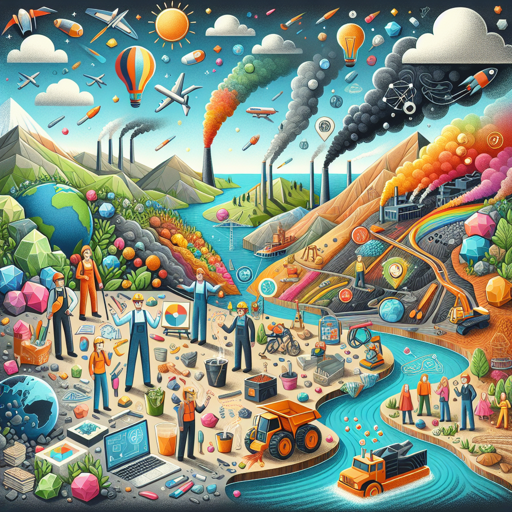Mining and Its Environmental Impact: A Comprehensive Study
Understanding the implications of mining on the environment and exploring mitigation strategies

Introduction
Mining is an integral part of human civilization, driving our industry, technology, and economies. But behind the glimmer of precious metals and gemstones lies a less appealing reality. Mining activities have significant impacts on the environment, often leading to diverse and substantial ecological challenges.
The Environmental Impacts of Mining
Mining affects the environment in several ways. Here are some of the most significant impacts:
Deforestation and Habitat Destruction
Mining operations often require large areas of land to be cleared, leading to deforestation and habitat destruction. This not only affects the local fauna and flora but also disrupts the entire ecosystem.
Soil Erosion
By removing vegetation and topsoil, mining operations expose the underlying soil to wind and water erosion. This leads to loss of fertile land and can cause landslides and other disasters.
Water Pollution
Mining often introduces harmful substances to local water sources, affecting both aquatic life and human populations that rely on these water bodies.
Air Pollution
Mining activities release dust and other pollutants into the air, contributing to air pollution. These pollutants can cause health problems in nearby communities and contribute to global climate change.
Noise and Light Pollution
Heavy machinery used in mining generates noise and light pollution, affecting local wildlife and disrupting ecosystems.
Mitigating the Impacts of Mining
While the environmental impacts of mining are significant, there are strategies to mitigate these effects:
Sustainable Mining Practices
Sustainable mining practices aim to reduce the environmental impact of mining operations. These can include using less water, minimizing land disturbance, and reducing waste.
Restoration of Mined Areas
Restoring mined areas to their natural state can help mitigate the environmental impacts of mining. This can involve re-vegetating the area, restoring topsoil, and reintroducing native fauna.
Regulation and Monitoring
Strict regulation and monitoring can help ensure mining operations adhere to environmental standards and best practices.
Technological Innovations
Technological innovations can help make mining more environmentally friendly. These can include more efficient mining techniques, pollution control technologies, and waste management solutions.
Quote
As the famous environmentalist Aldo Leopold once said, “We abuse land because we regard it as a commodity belonging to us. When we see land as a community to which we belong, we may begin to use it with love and respect.”
Visual Elements
| Impact | Mitigation Strategy |
|---|---|
| Deforestation | Re-vegetation |
| Soil Erosion | Restoration of topsoil |
| Water Pollution | Pollution control technologies |
| Air Pollution | More efficient mining techniques |
| Noise and Light Pollution | Use of quieter and less intrusive machinery |
External Reference
For more information on the impacts of mining and mitigation strategies, check out this comprehensive report by the United Nations Environment Programme.
Conclusion
The environmental impacts of mining are significant and far-reaching. However, through conscious efforts towards sustainable practices, strict regulation, and innovative technologies, we can mitigate these effects. The future of mining lies in our ability to harmonize our needs for minerals and gemstones with our responsibility to preserve and protect our environment.